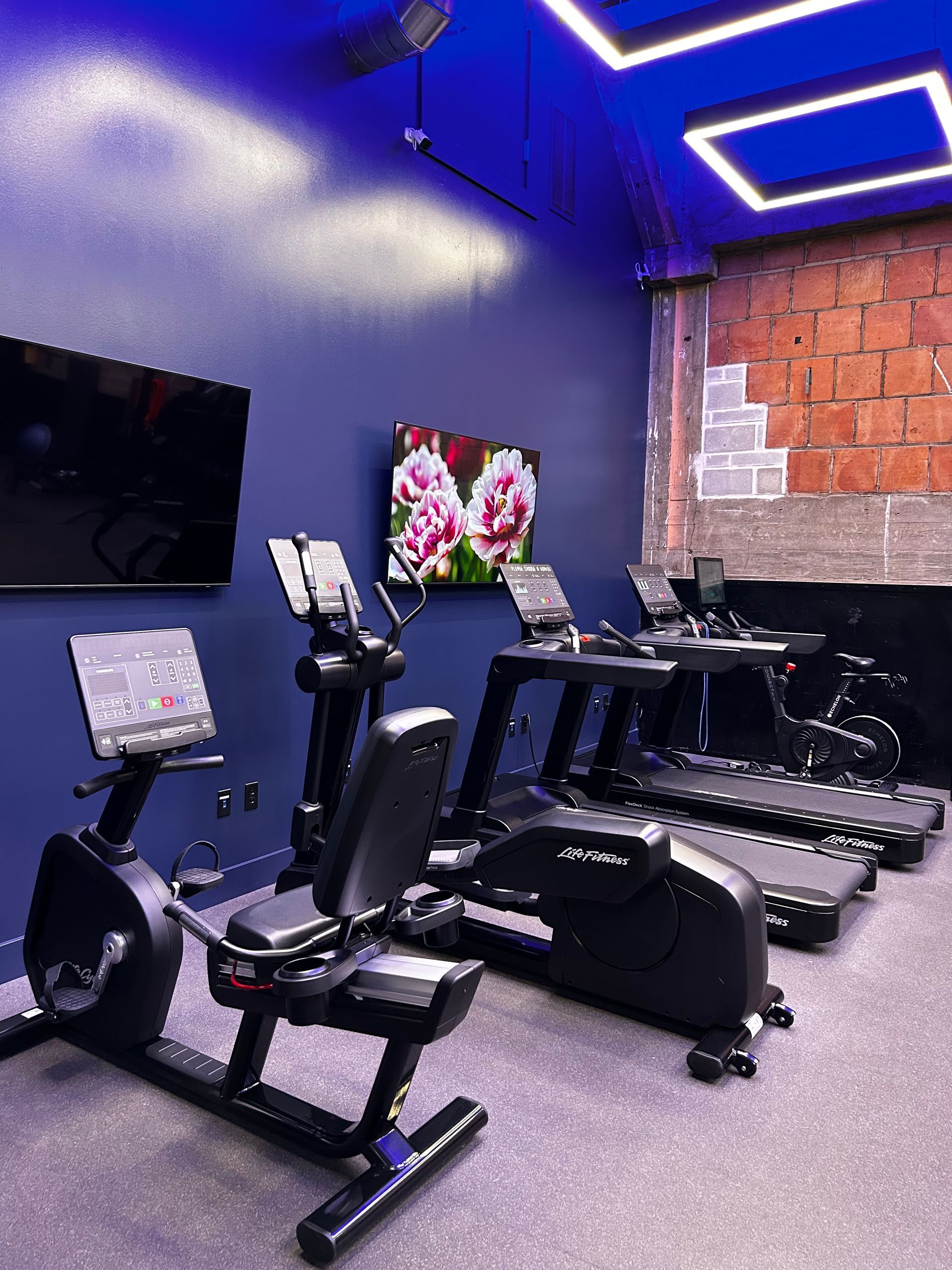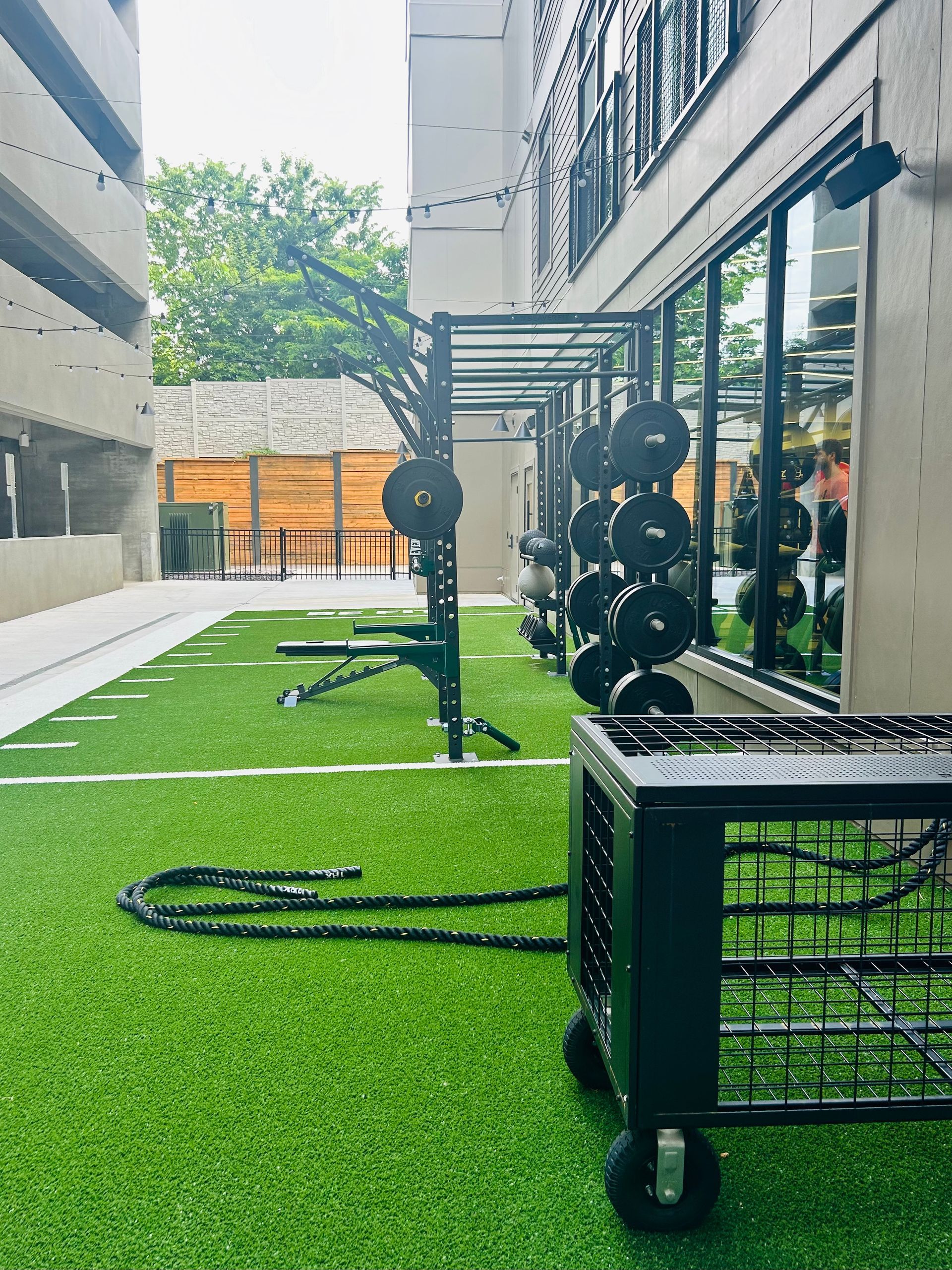Why Preventative Maintenance Saves Commercial Gyms Thousands Every Year
Commercial gyms are built around performance, safety, and consistency. When the equipment breaks down, all three of those pillars fall apart. Whether you manage a corporate fitness center, a university rec facility, a luxury apartment gym, or a full-scale health club, one thing is clear: downtime is expensive, and replacement costs are even worse. That is why preventative maintenance is not optional. It is essential.
Preventative maintenance is one of the most effective ways to protect your investment in commercial gym equipment. It improves user safety, prolongs the life of machines, reduces surprise repair bills, and keeps your facility running smoothly. In this guide, we will walk through the real financial impact of ignoring maintenance, what a proper plan should include, and how EcoFit helps gyms stay ahead of problems before they start.
What Is Preventative Maintenance?
Preventative maintenance refers to regularly scheduled inspections, cleanings, and tune-ups designed to keep your gym equipment in top shape. This includes things like:
- Tightening loose bolts and cables
- Lubricating joints and moving parts
- Checking safety stops and emergency features
- Cleaning drive systems and consoles
- Replacing worn belts and pads before they fail
- Running diagnostics on electronics and motors
Think of it like taking your car in for an oil change. You do not wait until the engine fails. You keep it running efficiently by addressing small issues on a regular basis. Gym equipment is no different.
The Cost of Reactive Repairs
It is tempting to skip regular service and only fix things when they break. This approach, known as reactive maintenance, may seem cheaper upfront but leads to much higher long-term costs. Here is why:
- More frequent breakdowns lead to member frustration and refunds
- Emergency repairs often come with rush labor fees and higher part costs
- Out-of-order machines create bottlenecks, which reduce user satisfaction
- Increased liability risk if someone is injured using poorly maintained equipment
- Shorter equipment lifespan meaning you need to replace machines more often
One broken treadmill motor can cost $800 to $1,500 in parts and labor. If that same treadmill had been inspected and maintained properly, the issue could have been caught early for a fraction of that cost.
Multiply those savings across your entire fleet of cardio and strength machines, and the numbers add up quickly.
Member Experience and Retention
Gym members notice when things are not working. Equipment with worn pads, clunky movements, or non-functioning screens sends the message that maintenance is not a priority. When members see the same machines out of order week after week, they often start looking elsewhere.
In commercial fitness settings, user experience is everything. Clean, safe, and functional equipment builds trust. It shows that your facility values its members and is committed to providing a great workout environment. Preventative maintenance is part of your brand, even if most people do not talk about it directly.
Safety First
Another critical reason for regular maintenance is safety. Gym equipment puts your members under load and stress. Cables, bolts, belts, and motors that are not inspected can lead to injury. A failed pulley or a sudden stop on a treadmill can cause serious harm and legal exposure.
A preventative maintenance program ensures that every machine is checked for potential safety issues before they turn into actual hazards. This protects your members and protects your business.
What a Good Maintenance Program Includes
Not all maintenance services are created equal. At EcoFit, our preventative maintenance programs are designed to cover every key point of failure and optimize machine performance.
Here is what we recommend including in any solid preventative plan:
Routine Inspections
Each piece of equipment should be visually inspected and tested at regular intervals. We check:
- Frame integrity and welds
- Cable tension and pulley alignment
- Belt tracking and wear
- Pedal and handlebar stability
- Electrical connections and screen function
Cleaning and Lubrication
Dust, sweat, and buildup cause long-term damage. Regular cleaning prevents this while lubricating joints and tracks reduces unnecessary wear.
- Clean moving components and frames
- Wipe down touchpoints and control panels
- Lubricate belts, rollers, and pivot points
Wear-and-Tear Replacements
Parts like grips, pads, belts, and chains wear out gradually. Replacing them before they fail keeps machines running without disruption.
- Inspect and replace high-friction items
- Check pads and cushions for cracks or tears
- Evaluate bearings and chains for smooth operation
Documentation and Scheduling
A good program should document each visit, what was serviced, and when the next checkup is due. This provides transparency, compliance, and peace of mind.
- Digital reports and records
- Maintenance tags for each machine
- Alerts for upcoming service windows
Frequency Matters
Some facilities try to do a yearly maintenance check and call it good. In high-use environments, that is not enough. Frequency should be based on usage volume, machine type, and environmental factors.
- High-traffic gyms: Monthly or quarterly maintenance
- Moderate-use spaces: Quarterly or bi-annual checkups
- Light-use areas (like apartment gyms): Twice per year
EcoFit will help you determine the right frequency for your location based on machine count, member volume, and type of equipment.
Staff Training Alone Is Not Enough
Some facilities rely on janitorial or front desk staff to wipe down machines and tighten bolts. While this helps with day-to-day cleanliness, it is not a replacement for professional service. Complex equipment like treadmills, ellipticals, and selectorized strength machines have internal components and electronics that require specific knowledge and tools.
Preventative maintenance from a qualified technician ensures that these systems are evaluated correctly and kept within the manufacturer’s recommended specs.
Protect Your Investment
Commercial fitness equipment is expensive. A single treadmill can cost anywhere from $3,000 to $10,000. Strength machines often cost even more. That investment deserves to be protected. Preventative maintenance can add years to the life of your machines.
Without it, small problems lead to larger ones, and your replacement cycle comes faster than it should. With it, your machines continue to perform like new and give your members the experience they expect.
Custom Maintenance Plans from EcoFit
At EcoFit, we offer custom preventative maintenance plans based on your facility’s unique setup. Whether you have 5 machines or 50, we provide scalable solutions that fit your budget and goals.
Here is what you can expect when working with us:
- A full equipment audit and usage review
- A maintenance schedule tailored to your needs
- Transparent reporting and service history tracking
- Access to quick-response repairs when needed
- Guidance on when to upgrade or replace aging equipment
We work with schools, corporate wellness programs, senior living centers, multifamily properties, and traditional gyms. No matter your setup, we help make sure your equipment is clean, safe, and working when your members need it.
The Long-Term Financial Impact
Let’s break this down simply.
Say your facility has 30 pieces of equipment. If even 10 of those experience avoidable breakdowns each year that cost $1,000 each to repair, you are looking at $10,000 annually. A preventative maintenance plan that costs less than half of that can reduce or eliminate those breakdowns entirely.
Now add in the hidden costs:
- Lost memberships due to frustration
- Downtime that affects group classes or training sessions
- Staff time spent managing repairs and member complaints
It is not just about saving on repairs. It is about running a more efficient business.
What Happens If You Delay Maintenance?
If your facility is already behind on equipment maintenance, you are not alone. Many gyms fall into the trap of putting it off until something goes wrong. But the longer you wait, the higher the risk. Here are some signs it is time to take action:
- Machines are constantly out of order
- Belts are slipping or motors are noisy
- Cables are fraying or weight stacks are uneven
- Members are making complaints
- Screens and consoles are glitching
If any of these issues sound familiar, it is time to schedule a full inspection and get your equipment back on track.
Final Thoughts
Preventative maintenance is not just a box to check. It is a business strategy. It protects your investment, improves safety, extends equipment lifespan, and keeps members happy. Skipping it leads to higher repair costs, frustrated users, and a reputation you do not want to carry.
EcoFit can take the pressure off your team by managing the entire maintenance process for you. From regular inspections to fast repairs, we have you covered.
If you are ready to save thousands and keep your facility running at full speed, contact EcoFit today to set up a preventative maintenance plan that works for you.






